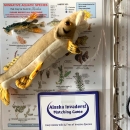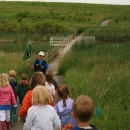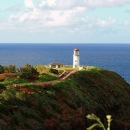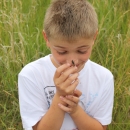Ways to get involved
Whether you want to further conservation, learn more about nature or share your love of the outdoors, you’ve come to the right place. National wildlife refuges provide many opportunities for you to help your community and fish and wildlife by doing what you love.
National wildlife refuges partner with volunteers, youth groups, landowners, neighbors and residents of urban and coastal communities to make a lasting difference.
Find out how you can help make American lands healthier and communities stronger while doing something personally satisfying.
Volunteer: Gain new experiences and meet new people while helping to advance wildlife conservation.
Local Friends Groups: Join neighbors in helping refuges restore habitat and expand access to green space.
Landowners: Learn how you can partner with the Fish and Wildlife Service to voluntarily restore land.
Coastal Communities: Learn how you and your neighbors can help conserve vital coastal habitat.
Urban Communities: Find out how urban residents can work with refuges to better their communities.
Youth Programs: Explore paid and unpaid opportunities to learn and develop leadership skills.
Discover for yourself what tens of thousands of volunteers have learned: Volunteering at a national wildlife refuge national wildlife refuge
A national wildlife refuge is typically a contiguous area of land and water managed by the U.S. Fish and Wildlife Service for the conservation and, where appropriate, restoration of fish, wildlife and plant resources and their habitats for the benefit of present and future generations of Americans.
Learn more about national wildlife refuge , fish hatchery or other U.S. Fish and Wildlife Service site is fun and rewarding in many ways. Master new skills. Meet new friends. Enjoy a sense of accomplishment from doing your part to further wildlife conservation for the pleasure of generations to follow.
Explore opportunities at volunteer.gov.
Why volunteer?
There is no single answer. You may want to give back to your community or share your knowledge of nature or passion for the outdoors. Maybe you simply want to serve a worthy cause.
Who can volunteer?
The U.S. Fish and Wildlife Service welcomes volunteers of all ages and backgrounds.
How do I become a volunteer?
Find opportunities and sign up at volunteer.gov or contact your local refuge or fish hatchery or Fish and Wildlife Service site.
What can I do as a volunteer?
Volunteers may lead tours, restore habitat, rescue turtles, conduct plant and animal surveys, remove invasive plants or teach elementary school students about the importance of healthy ecosystems. You might help at refuge events such as bird festivals and kids fishing days. You might help staff a refuge nature store.
Can a group or business volunteer?
You bet. See what some big-name companies are doing: “Company spirit on the refuge”. The Service also partners with other groups, including Boy Scouts and Girl Scouts.
What is a volunteer pass and how can I get one?
A one-year volunteer pass provides free access to sites that charge an entry fee.
What are some one-day events on refuges that can I volunteer for?
- National Public Lands Day
- Earth Day
- Christmas Bird Count
- Kids Fishing Days





